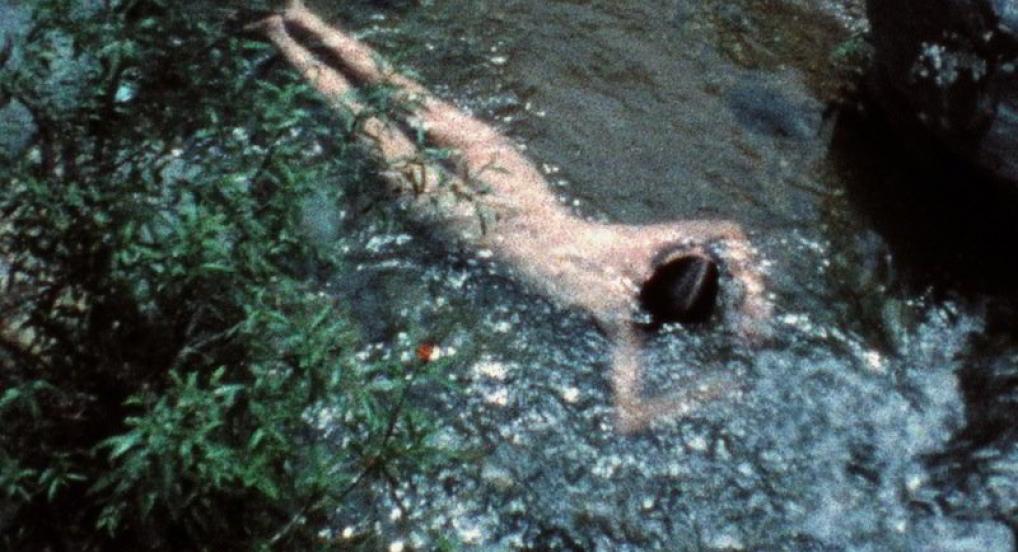My art is grounded in the belief of one universal energy which runs through everything from insect to man, from man to spectre, from spectre to plant, from plant to galaxy. My works are the irrigation veins of this universal fluid. […] My art comes out of rage and displacement. — Ana Mendieta
I have focused all my work on political violence, on forceful displacement, on war […] I focus on the small, individual, particular experience of a human being. […] There is a fragment of the population that is on the borders of life, on the edges of life, on the epicenter of catastrophe, and I would like to focus on them. — Doris Salcedo
Exiled from Cuba to the United States in 1961, artist filmmaker Ana Mendieta (b.1948) never forgot the ache of leaving her home, family and native soil. Running through her Super 8, 16mm and video work, this theme of displacement speaks directly to Harvard Art Museums’ current exhibition Doris Salcedo: The Materiality of Mourning.
Colombian artist Salcedo (b. 1958) shares with Mendieta an acute empathy with the displaced, marginalized and disempowered. Salcedo’s sculptures witness feelings of loss and oppression, personified in human traces. Mendieta’s films also use the body—specifically, her own—as a trace and grounding. With a potency of metaphor and a lightness of touch comparable to Salcedo, Mendieta’s films seldom last longer than a film reel (three minutes). A significant number of films in Mendieta’s Silueta series depict a female silhouette covered, outlined or infilled with leaves, soil, gunpowder, blood and cloth. Each records an intimate dialogue between body and landscape, in which identity seems both vulnerable to and nurtured by the land. In many other films too, Mendieta questions her identity and origins by merging into the land or water beneath her (Grass Breathing; Creek), transforming into various animals (Chicken Movie, Chicken Piece; Dog), and refracting herself through space to complicate her presence within it (Mirage).
Both Mendieta and Salcedo mourn for others in their work. While a cloth of rose petals commemorates the torture and death of a young Colombian nurse in Salcedo’s A Flor de Piel (2013), a pool of blood that distracts passers-by in Mendieta’s Moffitt Building Piece (1973) responds to crime reports in Iowa that included the rape and murder of a young woman. In addition to relating and relating to others’ stories, a feeling of shared experience also characterizes Mendieta’s practice, producing some of her most joyful films, Parachute (made with elementary school students) and Weather Balloon, Feathered Balloon (filmed from two people’s perspectives).
In Weather Balloon, Feathered Balloon white feathers burst from a balloon and float through the sky. In Mirage, Mendieta plucks feathers from her stomach. In Chicken Movie, Chicken Piece, she covers her limbs with feathers. An insulator and weathering, feathers are also wings, offering a poignant metaphor for Mendieta herself, who withstood hardships and navigated a bravely political course through life until her untimely death in 1985. Like letters painted on the wall in Blood Writing, Mendieta’s films are elliptical, uppercase declarations of individuality and tolerance—as urgent today as at the time of their making. – Becca Voelcker, PhD Candidate, Film and Visual Studies, Harvard
Programme: - Silueta Sangrienta (US 1975, Super 8, color, silent, 3 min) - Grass Breathing (Mexico 1974, Super 8, color, silent, 3 min) - Creek (Mexico 1974, Super 8, color, silent, 3 min) - Moffitt Building Piece (US 1973, Super 8, color silent, 3 min) - Blood Writing AKA She Got Love (US 1974, Super 8, color, silent, 3 min) - Chicken Movie, Chicken Piece (US 1972, Super 8, color, silent, 6 min) - Dog (Mexico 1974, Super 8, color, silent, 3 min) - Energy Charge (US 1975, digital video, color, silent, 49 sec) - Butterfly (US 1975, digital video, color, silent, 3 min) - Parachute (US 1973, video, b/w, 8 min) - Mirage (US 1974, Super 8, color, silent, 6 min) - Weather Balloon, Feathered Balloon (US 1974, Super 8, color, silent, 6 min)
Co-presented by the David Rockefeller Center for Latin American Studies (DRCLAS), Harvard Art Museums and the Carpenter Center for the Visual Arts in conjunction with Harvard Art Museums’ exhibition Doris Salcedo: The Materiality of Mourning.
DRCLAS will present a panel discussion about Ana Mendieta with Radcliffe Fellow Tania Bruguera and Carrie Lambert-Beatty, Professor of Visual and Environmental Studies, and of History of Art and Architecture on Monday February 6 at 5:30pm at CGIS South, 1730 Cambridge Street, Belfer Case Study Room.
Special thanks: Paola Ibarra—DRCLAS; Mary Schneider Enriquez—Harvard Art Museums; Dina Deitsch—Carpenter Center for the Visual Arts; Sarah Landry—Galerie Lelong.
Program curated by Becca Voelcker and Haden Guest. All films directed by Ana Mendieta and courtesy the Estate of Ana Mendieta Collection, LLC and Galerie Lelong, New York.
Ana Mendieta, artist’s statement (1983) from ‘Ana Mendieta, A Selection of Statements and Notes,’ “’Earth from Cuba, Sand from Varadero’ A Tribute to Ana Mendieta,’ ed. Clayton Eshleman and Caryl Eshlemen, Sulfur 22 (Spring 1988). 72. And Ana Mendieta in Eva Cockroft, ‘Culture and Survival,’ in Art and Artists 12 no.3 (February 1983). 16-17.
Doris Salcedo, ‘Doris Salcedo: Variations on Beauty,’ interview with Susan Sollins, Art21, April 2013.
